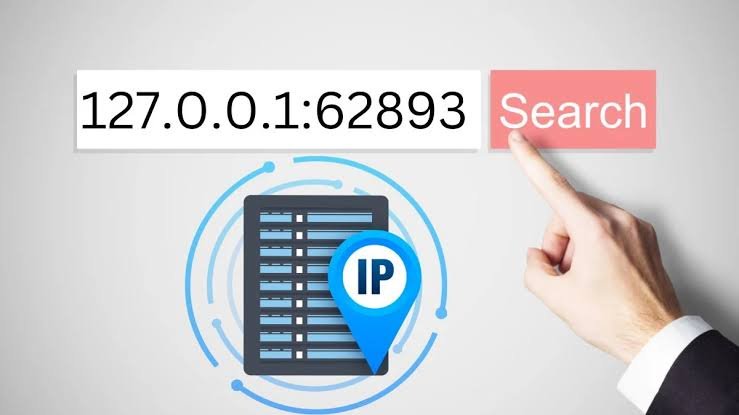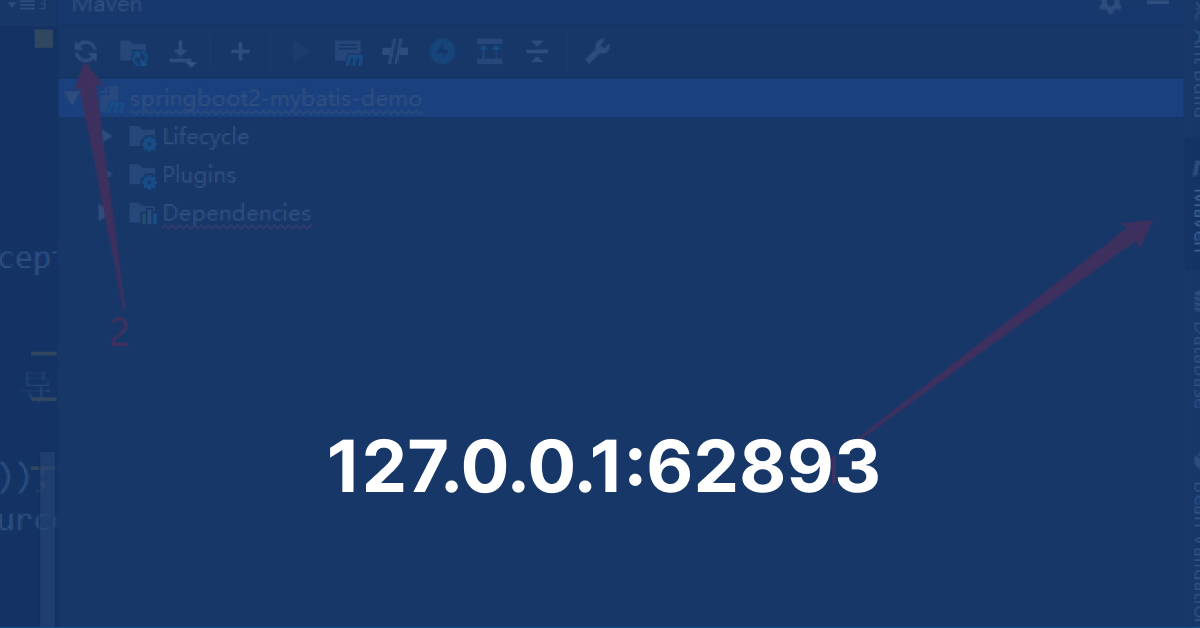Introduction to Localhost and IP Addresses
In the realm of computer networking, the concept of localhost plays a pivotal role, particularly in the context of IP addresses. Localhost, denoted by the IP address 127.0.0.1:62893 serves as a loopback address that enables computers to communicate with themselves. This functionality is integral for various networking tasks, including testing and development, as it allows applications to interact without the need for an external network connection.
The address 127.0.0.1:62893 is designated by the Internet Engineering Task Force (IETF) as part of the larger IPv4 address space, which comprises a multitude of addresses allocated for specific purposes. Specifically, the localhost address is reserved exclusively for local communications. This means that any data sent to this IP address is redirected back to the same machine, facilitating a wide array of applications from web servers to databases during the development phase.
Moreover, localhost can be associated with various port numbers, expanding its versatility in network communications. Each port can be thought of as a unique channel for different types of communication. For instance, when discussing port 62893, it is essential to recognize that this number denotes a specific instance of a running service or application on the localhost. The use of different port numbers with the loopback address is crucial in enabling multiple services to operate concurrently on the same device, allowing developers to configure environments effectively.
Understanding the significance of localhost and its associated IP address, particularly 127.0.0.1, enhances one’s grasp of networking fundamentals. The loopback feature exemplifies a foundational aspect of how network communications are established and managed, particularly within a singular device.
Understanding the Concept of Port Numbers

In the realm of computer networking, port numbers serve as integral components that enable the organization and routing of network traffic. Essentially, a port number is a numerical identifier that helps distinguish different types of communications occurring simultaneously over the same network interface. While an Internet Protocol (IP) address identifies a device on a network, the combination of the IP address and port number allows multiple applications to use the network concurrently without interference.
Each port number is associated with a specific service or application. For instance, web traffic typically utilizes port 80 for HTTP, while secure web traffic operates on port 443 for HTTPS. In this context, when referring to the address 127.0.0.1:62893, the IP address 127.0.0.1 represents the localhost—the device itself—while the port number 62893 specifies a particular service or application running on that device. This duality facilitates efficient communication by directing traffic to the appropriate program responding on that port.
Port numbers range from 0 to 65535, categorized into well-known ports (0-1023), registered ports (1024-49151), and dynamic or private ports (49152-65535). Well-known ports are reserved for widely-used protocols, ensuring that applications can be easily recognized and connected. Registered ports are utilized by user applications that are not as universally recognized but still require specific identification. The dynamic or private port range is typically used for ephemeral purposes, often allocated temporarily for client—server interaction.
Understanding the hierarchy and categorization of port numbers enhances clarity when diagnosing network-related issues or configuring local services. Ultimately, recognizing their role in conjunction with IP addresses is crucial for grasping how network traffic is managed and routed effectively, particularly in localized environments such as with localhost connections.
Common Uses for 127.0.0.1:62893

The IP address 127.0.0.1, often referred to as ‘localhost’, serves as a critical component in the realm of computer networking. When paired with port 62893, this combination is frequently utilized in various applications and services that require a dedicated environment for testing and development. One of the most prevalent uses of 127.0.0.1:62893 is in local web server setups. Developers employ this address to run applications in a sandboxed setting, enabling them to test their code without affecting public-facing services.
Another common application of 127.0.0.1:62893 is in database management systems. For instance, many database servers are configured to listen on localhost, allowing developers to access and manipulate data without the threat of external attacks. This adds a layer of security, as the database can only be reached from the local machine. Commonly used database services, such as MySQL or PostgreSQL, often have configurations that utilize the localhost address, making it vital for development cycles.
In addition to web and database services, the 127.0.0.1:62893 connection is crucial in various integrated development environments (IDEs). These platforms often link directly to this localhost address, allowing developers to test scripts and applications locally before deploying them to a production environment. Popular tools like Docker or Node.js also leverage 127.0.0.1 for service communications during development, streamlining the process of creating and testing applications. This demonstrates the utility of the address across a spectrum of programming scenarios, solidifying its role in modern software development.
Accessing 127.0.0.1:62893

To access services running on 127.0.0.1:62893, users typically interact with this local address through a web browser or various software tools. The process is straightforward, and several methods are available to suit different preferences and technical expertise.
One of the simplest ways to access 127.0.0.1:62893 is through a web browser. To do this, open your preferred browser and type http://127.0.0.1:62893 into the address bar. Pressing the Enter key should direct your browser to the service configured to listen at that port on your localhost. Ensure that the service you wish to access is running; otherwise, you may receive a connection error.
For users preferring command-line operations, using terminal or command prompt is an effective approach. Depending on the operating system, commands such as curl can be employed to fetch data from the local server. For instance, typing curl http://127.0.0.1:62893 in the terminal will return the content served on that endpoint. This method is particularly useful for developers testing APIs or web services in a controlled environment.
Additionally, configuring software tools to connect with 127.0.0.1:62893 often involves specifying the address in settings. Applications such as Postman or similar API clients allow users to set a custom request URL to the localhost address, facilitating testing and debugging of local services. Visual examples of these configurations can enhance the understanding and accessibility for users unfamiliar with the command line or browser settings.
In summary, accessing services through 127.0.0.1:62893 can be accomplished via web browsers, command-line tools, or dedicated software applications, allowing diverse options for various users.
Troubleshooting Connection Issues with 127.0.0.1:62893
![]()
When attempting to establish a connection to 127.0.0.1:62893, users can encounter various issues that impede successful communication with the local server. These challenges often arise from misconfigurations, software compatibility, or network settings. Therefore, it is essential to systematically troubleshoot these connection issues to ensure smooth operation.
One common problem could be the software not actively listening on the specified port. To verify this, users should check if the associated application or server is running correctly and monitoring port 62893. This can be done using command-line tools; for example, on Windows, the command netstat -ano | findstr :62893 can reveal if any service is utilizing the port. If no service appears, restarting the application or checking the configuration files may resolve the issue.
Firewall settings may also block connections to localhost. Users should review their firewall rules to ensure that connections to 127.0.0.1:62893 are allowed. If necessary, adding an exception for the relevant application or disabling the firewall temporarily for troubleshooting can provide clarity on whether these settings contribute to the problem.
An additional common cause of connectivity issues could be a conflict with another application using the same port. Utilizing tools like Task Manager or network utilities can help identify any conflicting applications. In such cases, reconfiguring the port used by either application may be necessary to resolve the conflict and restore connectivity.
Lastly, users should ensure their network settings are correctly configured. This includes verifying that no proxy settings are obstructing local connections. Should all these steps fail, reviewing system logs or seeking specialized advice may provide further insights into more complex issues affecting communication with 127.0.0.1:62893. By following these troubleshooting practices, many connection problems can be identified and resolved effectively.
Security Implications of Using 127.0.0.1:62893

The IP address 127.0.0.1 is associated with the localhost, which allows services to communicate within the same machine without the need for external network exposure. While using localhost offers several advantages in terms of development and testing, it is essential to acknowledge the security implications of exposing services on a specific port like 62893. When services are accessible through this port, even if they appear to be safe due to their local nature, they can still present vulnerabilities if not appropriately managed.
One of the primary concerns is that exposing services on 127.0.0.1:62893 can inadvertently allow unauthorized access if permission settings are misconfigured. For instance, applications may assume that requests to localhost will always be from a trusted source. However, if applications or services listen on this port without adequate authentication mechanisms, they may become susceptible to attacks such as privilege escalation or local exploitation by malicious actors who gain access to the machine.
To mitigate such risks, developers should implement robust security measures, such as adding authentication layers, encrypting data transmitted over the localhost, and applying strict firewall rules that limit access to the specific services operating on 127.0.0.1:62893. Regular software updates and patch management are also vital to protect against known vulnerabilities that could be exploited. Furthermore, developers should avoid unnecessary exposure of services by taking care to disable any non-essential functionalities before deployment.
In summary, while the use of localhost for service communication provides developers with a convenient and efficient method, it is imperative to recognize and address the associated security risks. By adopting best practices and maintaining a vigilant security posture, developers can ensure safer environments conducive to local application development. Protecting localhost services on addresses such as 127.0.0.1:62893 should be a priority, keeping in mind both accessibility and vulnerability management.
Performance Considerations for Localhost Connections

The performance of localhost connections, specifically when utilizing the IP address 127.0.0.1:62893, is a critical aspect for developers seeking to optimize their workflows. Localhost connections, by definition, refer to the communication between a server and client that occurs on the same machine. This unique setup usually offers lower latency and superior bandwidth compared to remote connections, making it an ideal environment for development and testing.
Latency is often significantly decreased when using localhost because it eliminates the need for data packets to travel across the internet. Instead, data is transmitted within the confines of the local machine, resulting in faster response times. In contrast, remote server connections can experience delays due to various factors, including network congestion and distance, which can hinder development efficiency and productivity.
Additionally, the bandwidth available for localhost connections is typically higher since it is not subject to the limitations of external network speeds. This capacity allows developers to execute multiple tasks simultaneously, such as running a server and querying databases without experiencing bottlenecks. This can greatly enhance the overall development process, allowing for iterative testing and faster debugging.
When comparing the performance of localhost connections to remote servers, it becomes evident that localhost typically provides a more stable and efficient environment. While remote servers can offer robust features and scalability, they may not always match the immediate responsiveness that a local setup provides. Therefore, for developers needing to fine-tune applications or conduct rigorous testing cycles, leveraging the localhost capabilities of 127.0.0.1:62893 can yield significant performance benefits.
Alternatives to 127.0.0.1:62893

In the realm of networking and web development, the address 127.0.0.1:62893 signifies the localhost, which refers to the local machine a user is currently working on. While this address is commonly utilized in various development contexts, alternatives do exist that developers can employ for specific purposes. Understanding these alternatives can enhance the development process and application testing.
One significant alternative is the use of the specific IP address, such as 192.168.1.1. This address is designated for local area network (LAN) use and is typically assigned to devices within a private network. By using this address, developers can test how applications behave within their networks as opposed to solely on the local machine. Additionally, if devices are configured to use static IPs, accessing different devices on the network can simulate real user interactions, thereby enhancing testing scenarios.
Furthermore, port numbers can also be adjusted to better suit the development needs. For instance, rather than defaulting to the commonly used port 80 or the assigned port 62893, developers may choose to use higher, less typical port numbers such as 8080 or 8888. This practice can be particularly useful when multiple applications are running simultaneously on the same machine, allowing for clearer traffic management and reducing the risk of port conflicts.
Ultimately, the choice of using alternatives to 127.0.0.1:62893—whether it be alternative IP addresses or different port numbers—depends on the desired testing environment and the specific goals of the development project. By selecting appropriate configurations, developers can create versatile environments that mirror various real-world scenarios effectively.
Conclusion: The Importance of Localhost in Networking
In exploring the significance of 127.0.0.1:62893, we uncover the pivotal role that localhost connections play in networking. Localhost, often represented by the IP address 127.0.0.1, acts as a loopback interface, allowing a device to communicate with itself without the need for external network connections. This functionality is crucial for various purposes, such as testing, development, and debugging applications. Understanding the intricacies of localhost enhances our ability to streamline network processes, as it facilitates a controlled environment where developers can evaluate and enhance their software without the hindrance of external variables.
Furthermore, the use of specific ports, like 62893, showcases how developers can isolate applications and services. Each port can serve different applications or processes, thus enabling multiple services to run simultaneously on the same machine. This type of setup is essential not only for software development but also for web hosting and database management. By managing connections locally, developers can work more efficiently and effectively, pinpointing issues and ensuring optimal performance before deploying their applications in a live environment.
Moreover, understanding localhost connections contributes to improved security. By limiting access to local resources, developers can protect sensitive data and reduce the risk of vulnerabilities that may arise from external access. This controlled access is particularly beneficial during the development phase when new functionalities are being tested. Ultimately, grasping the importance of localhost and its associated connections is vital for professionals within the field of networking and software development, as it lays the foundation for robust and resilient systems. As we continue to navigate the complexities of network communications, the role of localhost remains a fundamental aspect that warrants attention and comprehension.






